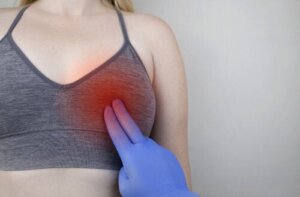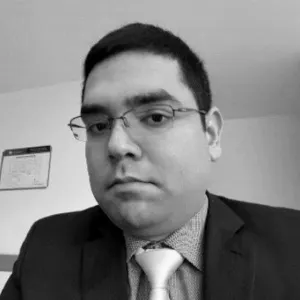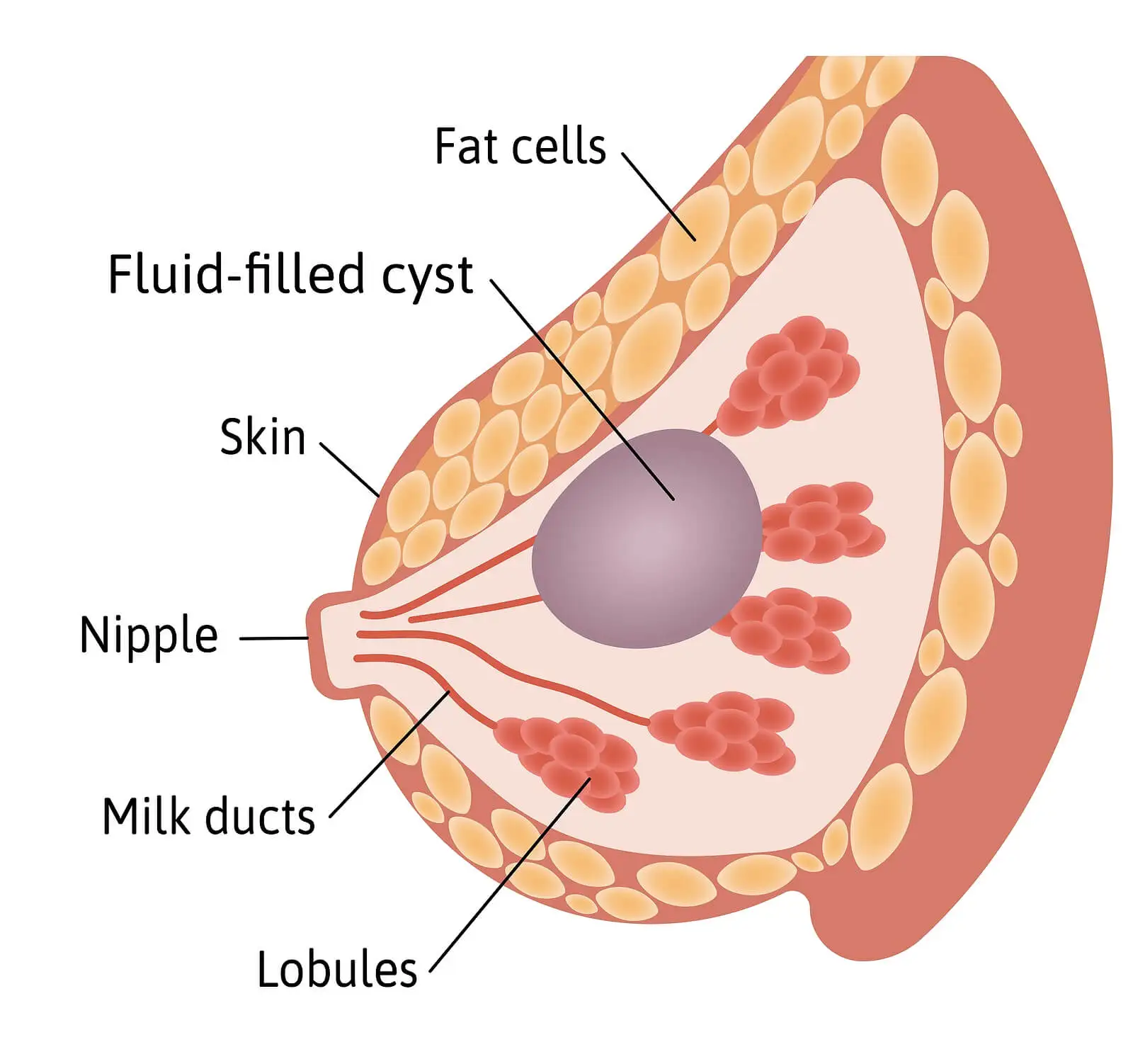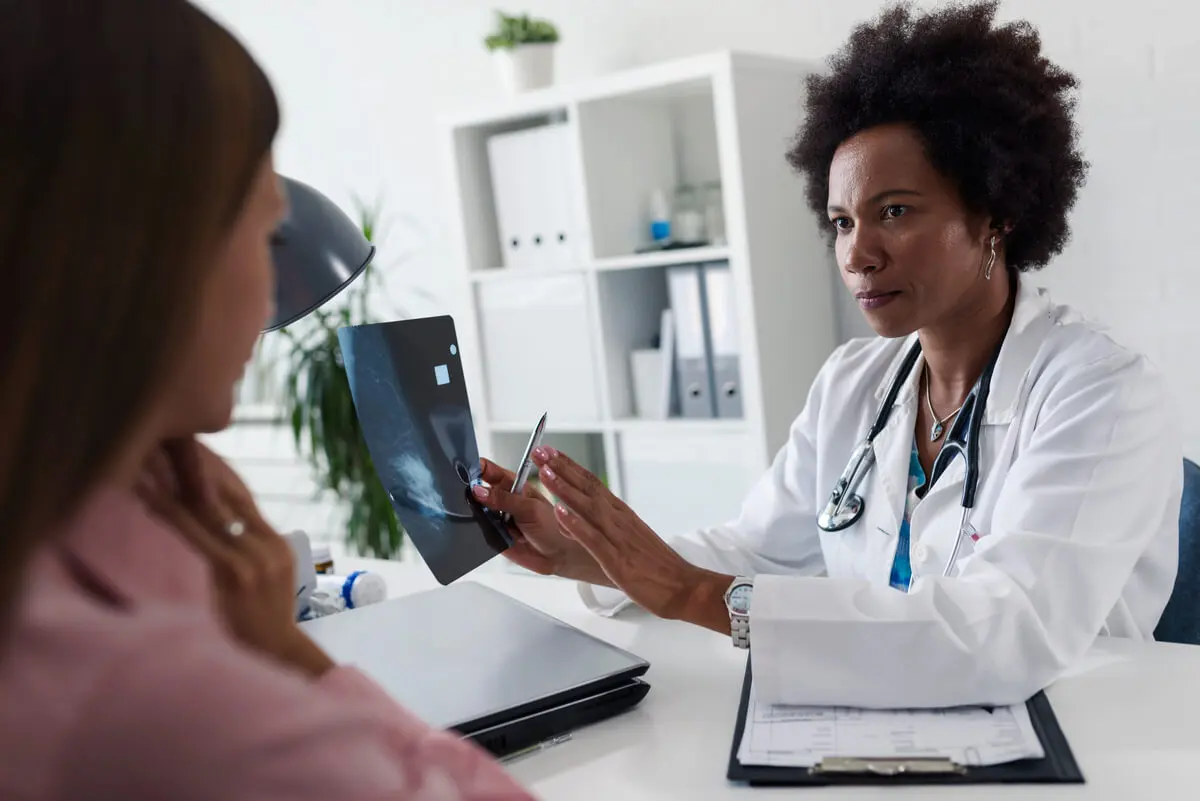Breast Cysts: What Do They Mean?


Written and verified by the doctor Mario Benedetti Arzuza
Breast cysts are fluid-filled sacs inside the breast that aren’t usually cancerous – they’re benign. Therefore, even though they’re very common, breast cysts can cause considerable worry. However, as you’ll see in this article, the likelihood that they’re malignant is pretty low.
The American Cancer Society explains, “Many breast lumps (masses, nodules, bumps) can be caused by fibrosis or cysts, which are noncancerous (benign) changes in breast tissue. These changes are grouped into what are known as “fibrocystic changes”.
Although there’s no direct relationship between breast cysts and the development of breast cancer, the likelihood is higher in women who haven’t had children, those with irregular menstrual cycles, or those with a family history of breast cancer.
Therefore, it’s recommended that women should always be aware of possible changes in their breasts and go to their respective checkups periodically.
What is a breast cyst?

Taking into account the anatomy of a breast, it’s common for the lobules to become blocked, which can cause fluid to accumulate inside them, thus leading to the appearance of breast cysts.
A breast cyst is a collection of liquid inside the breast. It’ll be a clearly defined pouch that’s usually quite small – around the side of a chickpea or perhaps smaller. They usually have liquid inside, although some cysts also have a solid content.
There’s no specific rule about when they’ll appear. They can appear in very young women, even girls – around 10-12 years of age on average.
If it’s liquid or semi-solid, without any indications that it may contain blood, for example, it will be, in most cases, a simple cyst. These don’t develop into malignant cancer, nor are they dangerous.
In cases like these, it’s possible to remove the liquid, and to then try to avoid the different factors that could aggravate or trigger them.
Fibroadenomas
Another type of breast cysts are fibroadenomas. They usually have no symptoms, are painless, and are found when examining the breast. They’re like a hard, mobile lump and they can appear smooth to the touch, or even with a certain roughness. They’ll move freely as you touch them, like a small chickpea that moves, and they’re also benign.
These form due to an excessive proliferation of breast tissue, and, although they can tend to be confused with the ones we’ve mentioned above, they’re different. Fibroadenomas are more frequent before menopause.
Although they can appear at any age, they usually appear at puberty, and in young adult women. For this reason, their appearance has been related to hormonal changes at these ages.
The treatment of cysts generally consists of the woman monitoring her breasts. Surgery isn’t usually necessary, but, if the woman wants to get rid of them, then simple cysts are eliminated with a puncture that will draw out the contents. Complex cysts will need a biopsy and surgery to remove them.
Causes of breast cysts
Experts haven’t been able to determine the causes of breast cysts, but several risk factors have been highlighted in this respect, such as genetics and hormonal changes.
You may be interested in: Capecitabine for Breast Cancer: Uses and Side Effects
Misconceptions about breast cysts

Some popular beliefs regarding why cysts appear in the breasts simply aren’t true. Most are based on random, unscientific assumptions inspired by a lack of knowledge and fear of cancer treatment techniques.
For example, some people say that mammograms can damage your breasts, that accidental or frequent blows cause cancer, that puncturing (needle aspiration to analyze the contents) causes the cyst to spread, or that biopsies cause cancer.
Can breast cysts be prevented?
A healthy lifestyle can help you feel good. However, there are no specific measures that can help to prevent breast cysts. Because of this, the best thing is to always maintain good lifestyle habits, see your doctor for regular check-ups, be aware of any changes in your breasts, and always discuss your concerns with your doctor.
- Doctors recommend that you carry out breast self-examination at least once a month, on the days right after menstruation.
- Most women have lumps or lumpy areas in their breasts all the time, so don’t panic if you notice any. This advice comes from experts from the Breast Cancer Organization.
All cited sources were thoroughly reviewed by our team to ensure their quality, reliability, currency, and validity. The bibliography of this article was considered reliable and of academic or scientific accuracy.
- Gallego, G. (2005). Nódulo Palpable de Mama. Revista Colombiana de Obstetricia y Ginecología.
- Heath, C. B. (2010). Breast cyst aspiration. In Primary Care Procedures in Women’s Health. https://doi.org/10.1007/978-0-387-76604-1_19
- Jackson, V. P., & Bassett, L. W. (1998). Breast sonography. Breast Disease. https://doi.org/10.3233/BD-1998-103-408
- Early Breast Cancer Trialists’ Collaborative Group (EBCTCG). (2005). Effects of chemotherapy and hormonal therapy for early breast cancer on recurrence and 15-year survival: an overview of the randomised trials. The Lancet. https://doi.org/10.1016/S0140-6736(05)66544-0American Cancer Society. (2016).
- Breast Cancer; What is breast cancer ? American Cancer Society. https://doi.org/10.1002/9780470041000.cedt005
This text is provided for informational purposes only and does not replace consultation with a professional. If in doubt, consult your specialist.








